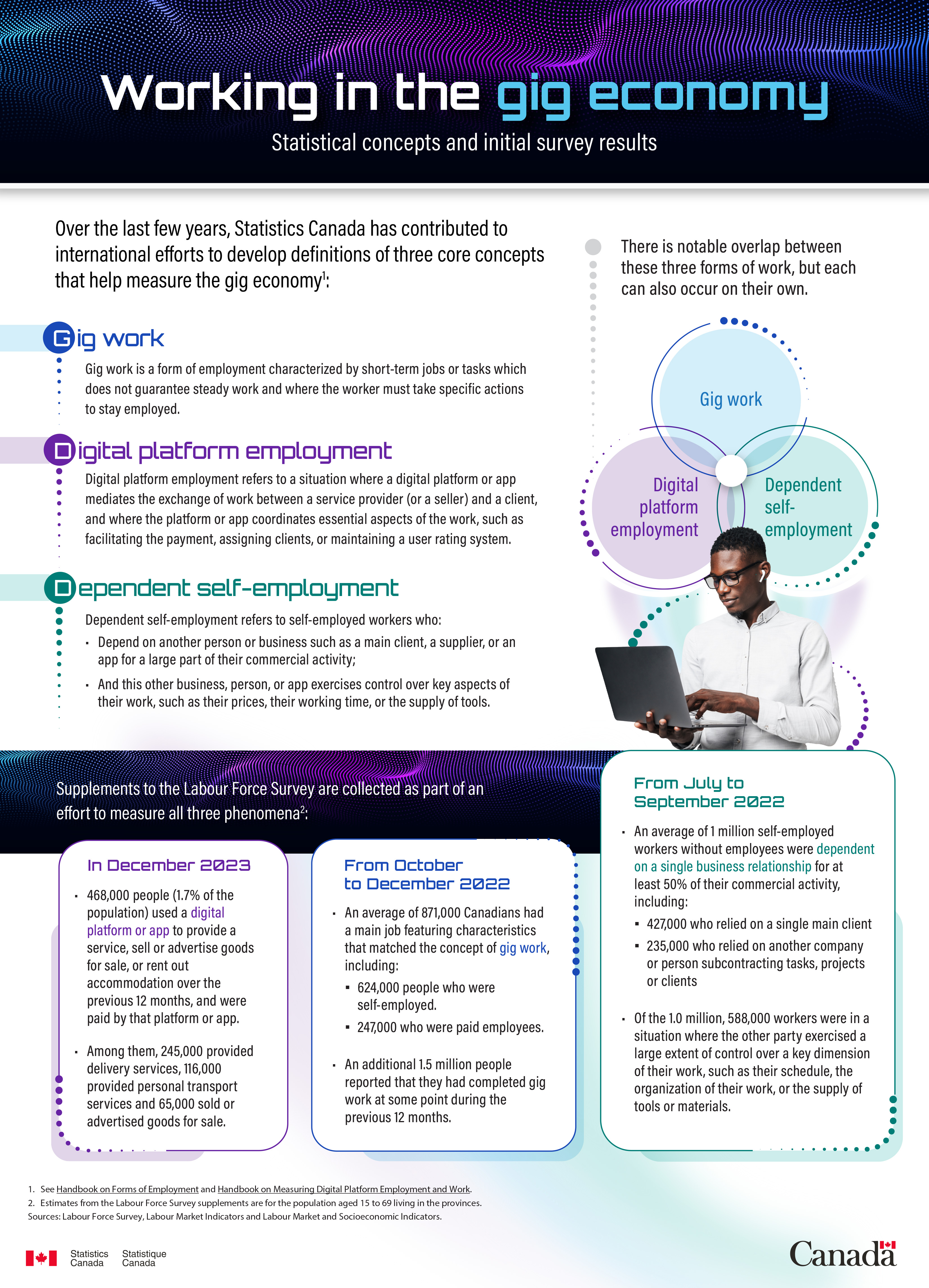![]() Working in the gig economy – Statistical concepts and initial survey results (PDF, 44.57 MB)
Working in the gig economy – Statistical concepts and initial survey results (PDF, 44.57 MB)

Description: Working in the gig economy – Statistical concepts and initial survey results
Over the last few years, Statistics Canada has contributed to international efforts to develop definitions of three core concepts that help measure the gig economyFootnote 1:
- Gig work is a form of employment characterized by short-term jobs or tasks which does not guarantee steady work and where the worker must take specific actions to stay employed.
- Digital platform employment refers to a situation where a digital platform or app mediates the exchange of work between a service provider (or a seller) and a client, and where the platform or app coordinates essential aspects of the work, such as facilitating the payment, assigning clients, or maintaining a user rating system.
- Dependent self-employment refers to self-employed workers who:
- Depend on another person or business such as a main client, a supplier, or an app for a large part of their commercial activity;
- And this other business, person, or app exercises control over key aspects of their work, such as their prices, their working time, or the supply of tools.
- There is notable overlap between these three forms of work, but each can also occur on their own.
Image of a Venn diagram composed of three intersecting circles, which represents the overlap between three concepts:
The top left circle represents gig work.
The top right circle represents digital platform employment.
The lower circle represents dependent self-employment.
Supplements to the Labour Force Survey are collected as part of an effort to measure all three phenomenaFootnote 2:
- In December 2023
- 468,000 people (1.7% of the population) used a digital platform or app to provide a service, sell or advertise goods for sale, or rent out accommodation over the previous 12 months, and were paid by that platform or app.
- Among them, 245,000 provided delivery services, 116,000 provided personal transport services and 65,000 sold or advertised goods for sale.
- From October to December 2022
- An average of 871,000 Canadians had a main job featuring characteristics that matched the concept of gig work, including:
- 624,000 people who were self-employed.
- 247,000 who were paid employees.
- An additional 1.5 million people reported that they had completed gig work at some point during the previous 12 months.
- An average of 871,000 Canadians had a main job featuring characteristics that matched the concept of gig work, including:
- From July to September 2022
- An average of 1 million self-employed workers without employees were dependent on a single business relationship for at least 50% of their commercial activity, including:
- 427,000 who relied on a single main client
- 235,000 who relied on another company or person subcontracting tasks, projects or clients
- Of the 1.0 million, 588,000 workers were in a situation where the other party exercised a large extent of control over a key dimension of their work, such as their schedule, the organization of their work, or the supply of tools or materials.
- An average of 1 million self-employed workers without employees were dependent on a single business relationship for at least 50% of their commercial activity, including:
Sources: Labour Force Survey, Labour Market Indicators and Labour Market and Socioeconomic Indicators.